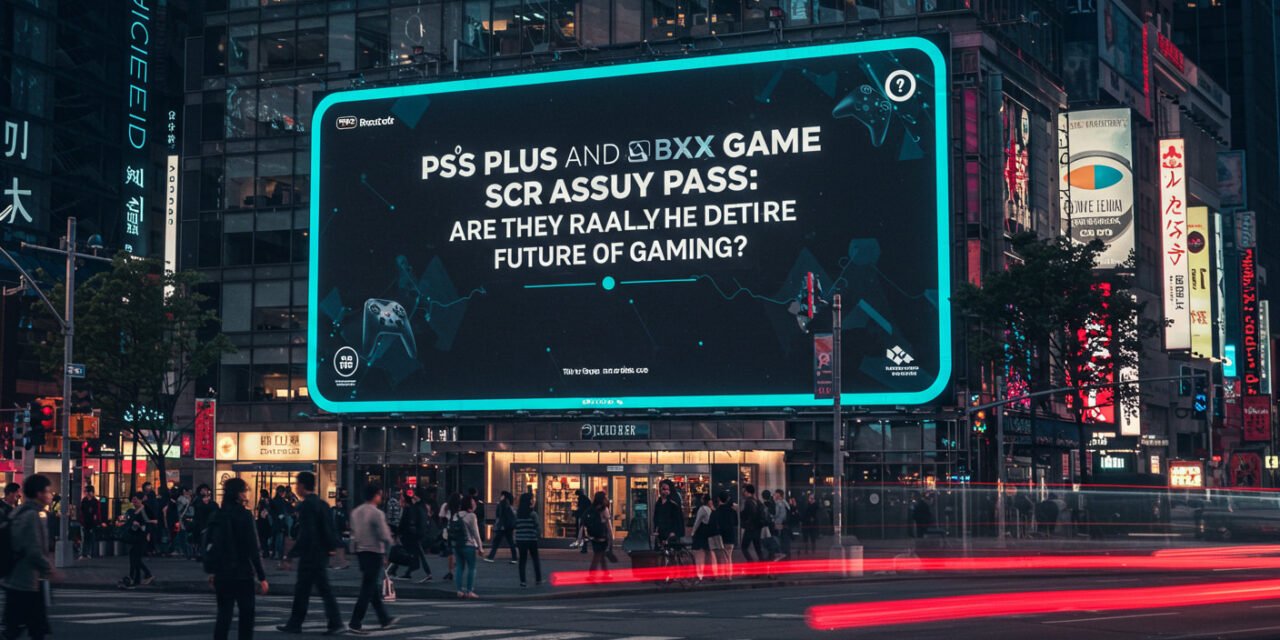The Subscription Model Under Scrutiny
In recent years, subscription services like PlayStation Plus (PS Plus) and Xbox Game Pass have been hailed as the future of gaming. Offering vast libraries of games for a monthly fee, they promised to revolutionise how we access and play games. However, recent analyses and industry trends suggest that this model may not be the panacea it was once thought to be.
The Rise of Gaming Subscriptions
The concept of gaming subscriptions isn’t new, but it gained significant traction with the launch of Xbox Game Pass in 2017. Microsoft envisioned it as the “Netflix of gaming,” providing players with access to a rotating catalogue of games for a monthly fee. Sony followed suit, revamping PS Plus to include a similar model.
These services aimed to lower the barrier to entry for gamers, allowing them to experience a wide range of titles without the hefty upfront costs. For developers and publishers, it offered a new revenue stream and a way to reach broader audiences.
Analysts Question the Sustainability
Despite the initial enthusiasm, some industry analysts are now questioning the long-term viability of the subscription model. One concern is the financial sustainability for developers. While subscription services can provide exposure, they may not generate the same revenue as traditional sales, especially for indie developers.
Moreover, the cost of developing AAA titles continues to rise. With games like “God of War: Ragnarok” and “Halo Infinite” requiring massive budgets, relying solely on subscription revenue could be risky.
Consumer Behaviour and Preferences
Another factor to consider is consumer behaviour. While subscriptions offer value, not all gamers are keen on the model. Some prefer to own their games outright, ensuring access regardless of subscription status. Others may not find the rotating catalogue appealing, especially if their favourite titles are removed.The Verge
Additionally, the sheer volume of available games can be overwhelming. Players might struggle to choose what to play, leading to decision fatigue and less engagement.
The Impact on Game Development
The subscription model also influences how games are developed. There’s a risk that developers might prioritise quantity over quality, aiming to produce games that fit the subscription mould rather than pushing creative boundaries. This could lead to a homogenization of game experiences, with fewer innovative titles making it to market.
Alternative Models Gaining Traction
While subscriptions have their place, alternative models are gaining popularity. Free-to-play games with microtransactions, such as “Fortnite” and “Genshin Impact,” have proven highly profitable. These games offer free access with optional purchases, appealing to a broad audience.
Cloud gaming is another area of growth. Services like NVIDIA GeForce Now and Google Stadia (before its shutdown) experimented with allowing players to stream games without high-end hardware. While still in its infancy, cloud gaming presents a different approach to accessibility.
The Future of Gaming: A Hybrid Approach
Given the pros and cons, the future of gaming may lie in a hybrid approach. Subscriptions can coexist with traditional sales, free-to-play models, and cloud gaming. This diversity allows players to choose the model that best fits their preferences and budgets.
For developers and publishers, diversifying revenue streams can mitigate risks associated with any single model. By offering games across various platforms and models, they can reach wider audiences and adapt to changing market dynamics.
Conclusion: Rethinking the “One-Size-Fits-All” Model
While PS Plus and Xbox Game Pass have reshaped the gaming landscape, they may not be the definitive future of gaming. As the industry evolves, it’s clear that flexibility and adaptability are key. By embracing multiple models and listening to consumer preferences, the gaming industry can continue to thrive and innovate.





